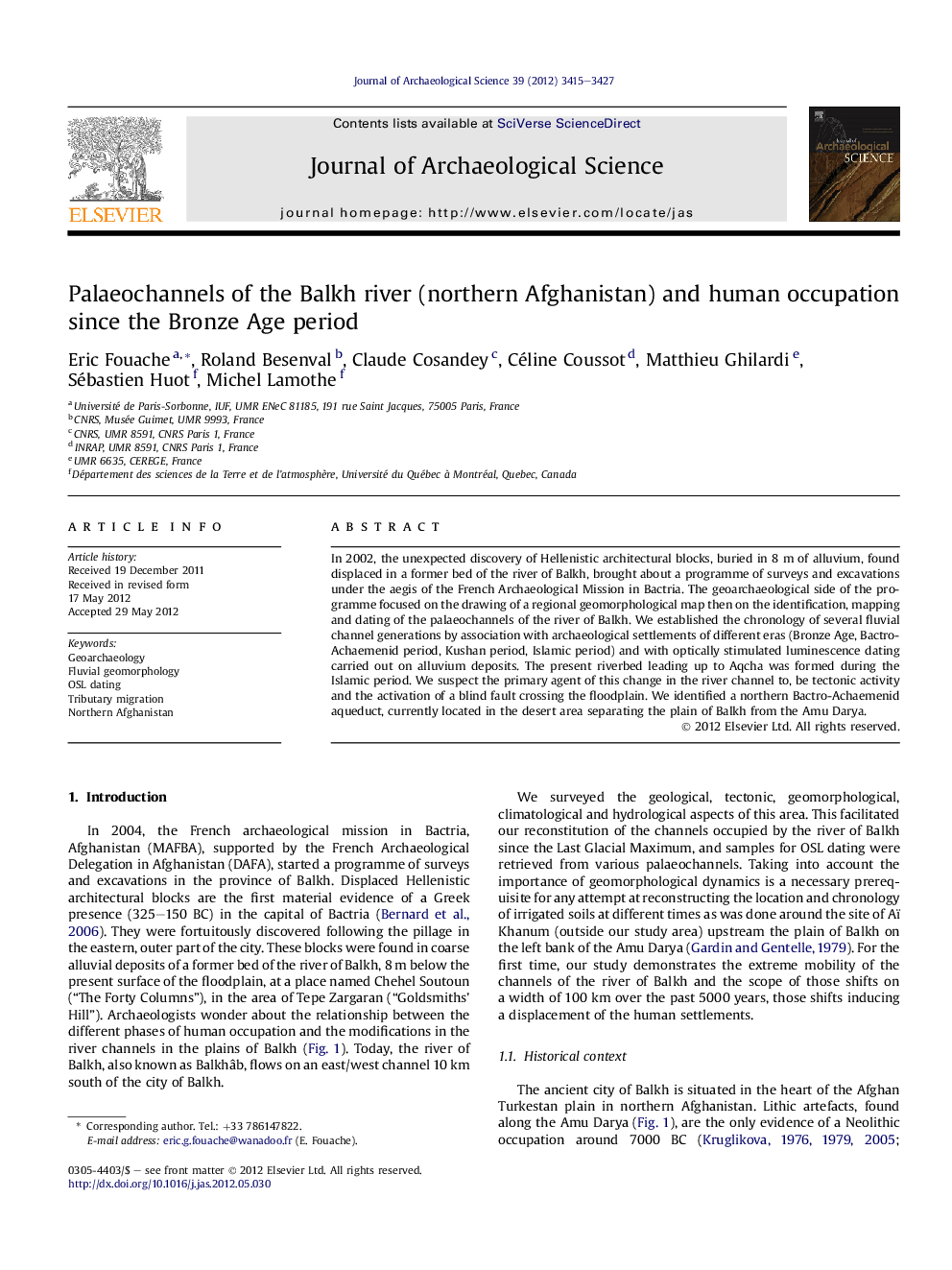| Article ID | Journal | Published Year | Pages | File Type |
|---|---|---|---|---|
| 1035524 | Journal of Archaeological Science | 2012 | 13 Pages |
In 2002, the unexpected discovery of Hellenistic architectural blocks, buried in 8 m of alluvium, found displaced in a former bed of the river of Balkh, brought about a programme of surveys and excavations under the aegis of the French Archaeological Mission in Bactria. The geoarchaeological side of the programme focused on the drawing of a regional geomorphological map then on the identification, mapping and dating of the palaeochannels of the river of Balkh. We established the chronology of several fluvial channel generations by association with archaeological settlements of different eras (Bronze Age, Bactro-Achaemenid period, Kushan period, Islamic period) and with optically stimulated luminescence dating carried out on alluvium deposits. The present riverbed leading up to Aqcha was formed during the Islamic period. We suspect the primary agent of this change in the river channel to, be tectonic activity and the activation of a blind fault crossing the floodplain. We identified a northern Bactro-Achaemenid aqueduct, currently located in the desert area separating the plain of Balkh from the Amu Darya.
► We have mapped the palaeochannels of the river of Balkh (Afghanistan). ► The palaeochannels have been dated in relation with the archaeological sites. ► OSL dating was used to date those palaeochannels. ► Since the Bronze Age, the mobility of human settlements is directly linked with the mobility of the channels of the river.
